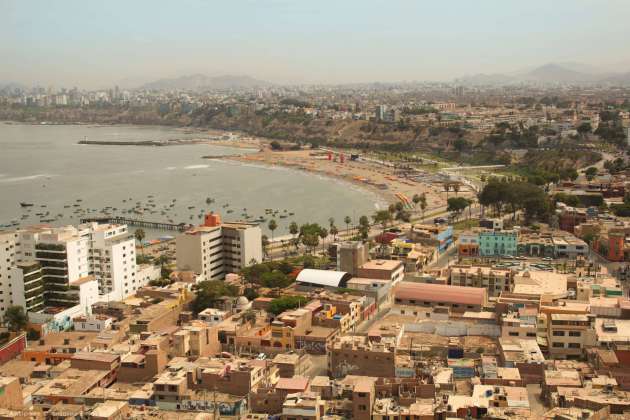

Lima and its region
Next to the Rimac river's mouth, Lima city and its region accomodates one-third of the peruvian people, is extended over the desert by the sea, in the half way from the northern edge and the south end of the country.
Lima
The capital city of the country, accommodates more than one-third of Peruvian people in a noisy and deafening massive megacity. The "city of the kings" was founded by Francisco Pizarro, the conqueror of Peru and south america, in january of 1535, Lima becomes quickly the capital (instead of Cusco), keeping the control of all the commerce and administration activities in the colony. Lima is from this moment the symbol of the colonialism and the Spanish rule. During the last decades, many slums named “pueblos jovenes”, young villages, have developed around the city, like favelas or Brazilian slums, with all the problems and social disparities that attract. This is a bustling city in perpetual motion, the typical capital of a country with a booming economy; which culture and history is full of surprises, for whoever that takes few minutes to observe. The sighseeing of the city includes a walk by the neighborhoods with a colonial architecture such as Miraflores, San Isidro and historic center with the architectural assembly of the Ran francisco, a little jewel of the colonial legacy; the San Francisco church, la Soledad and El Milagro. in program you'll have also the catacombs keeping over 25000 human remains.
Callao
The capital's port is called Callao. It is an area where, it is said, it is better not to go alone, except in the traditional tourist circuit. The military museum, of course, but also the Punta, from where you can swim across from of the few islands - one of which is an old prison. It's a refreshing seaside spot, and a nice afternoon walk away from the horns and smells of the frenetic capital.
In the surroundings areas of Lima, several sites of interest have to be mentioned: Pachacamac, the temple of the sun; Caral, the abandoned sacred city; Chosica, with its welcoming climate and old pre-Inca ruins; as well as the many beaches in the north and south, when summer is too hot...



